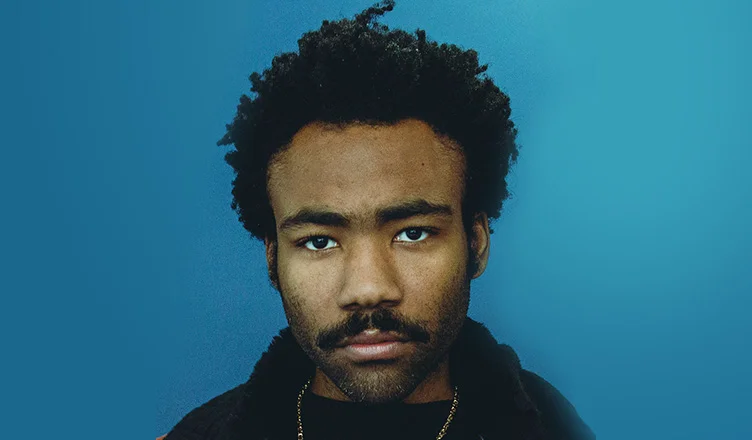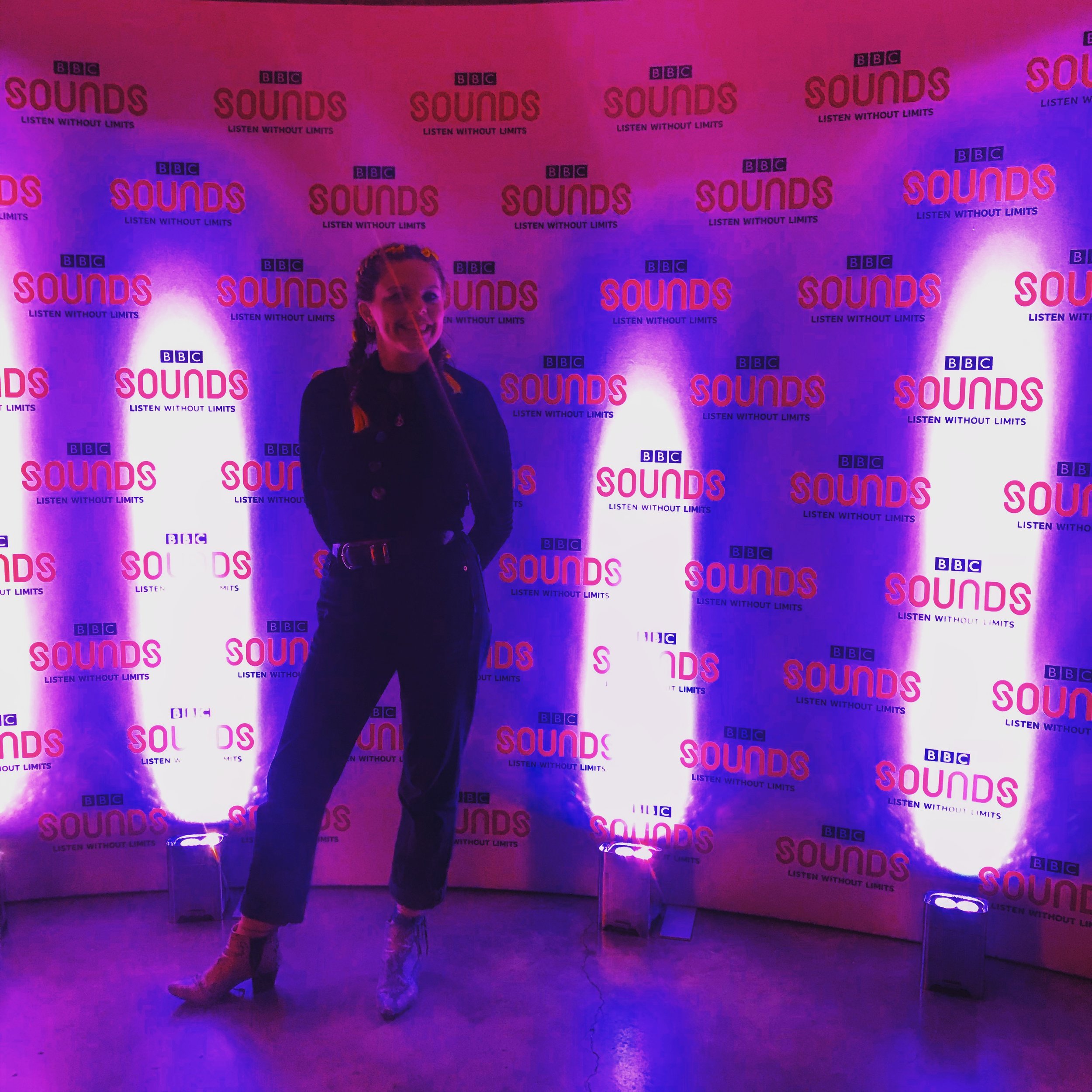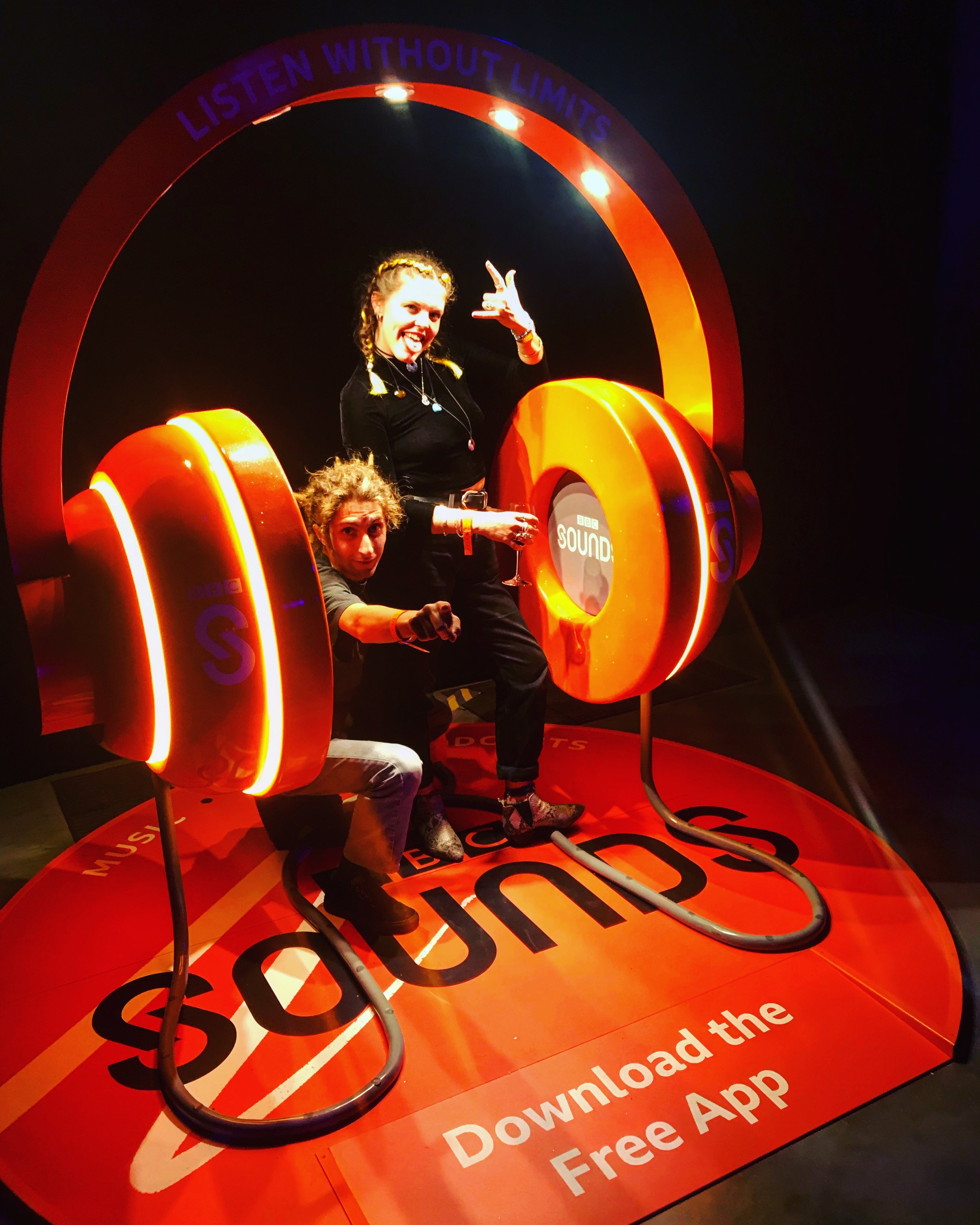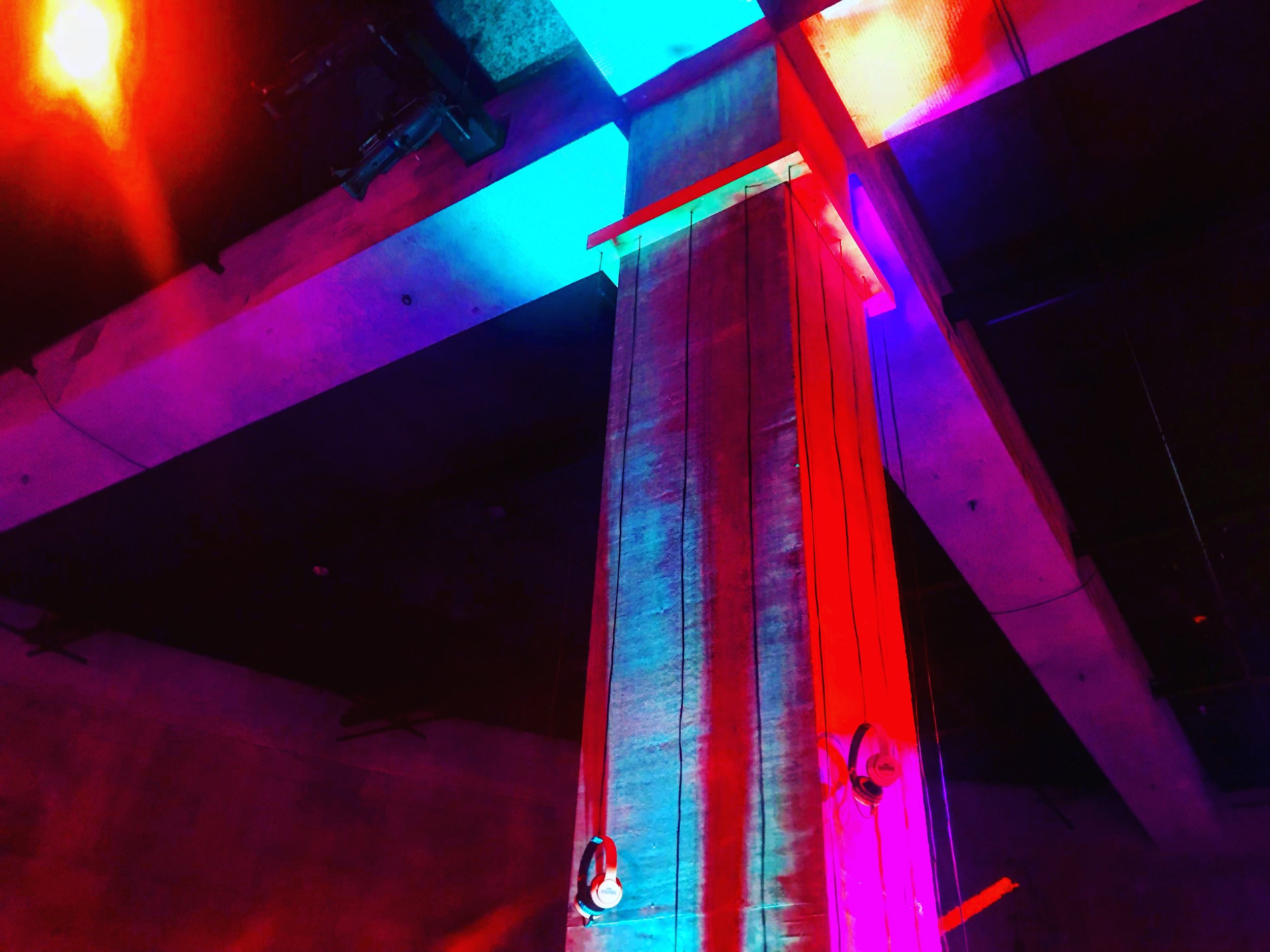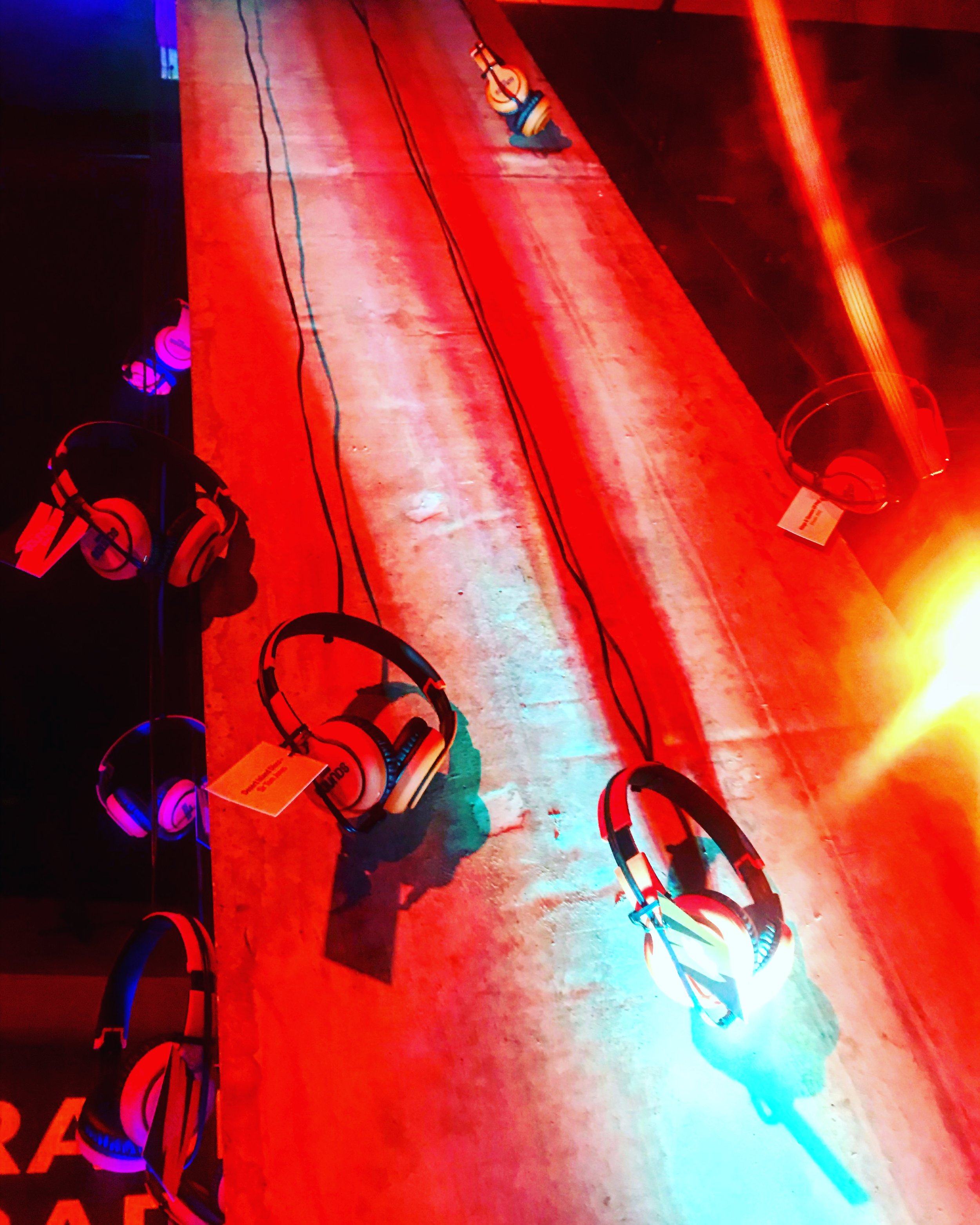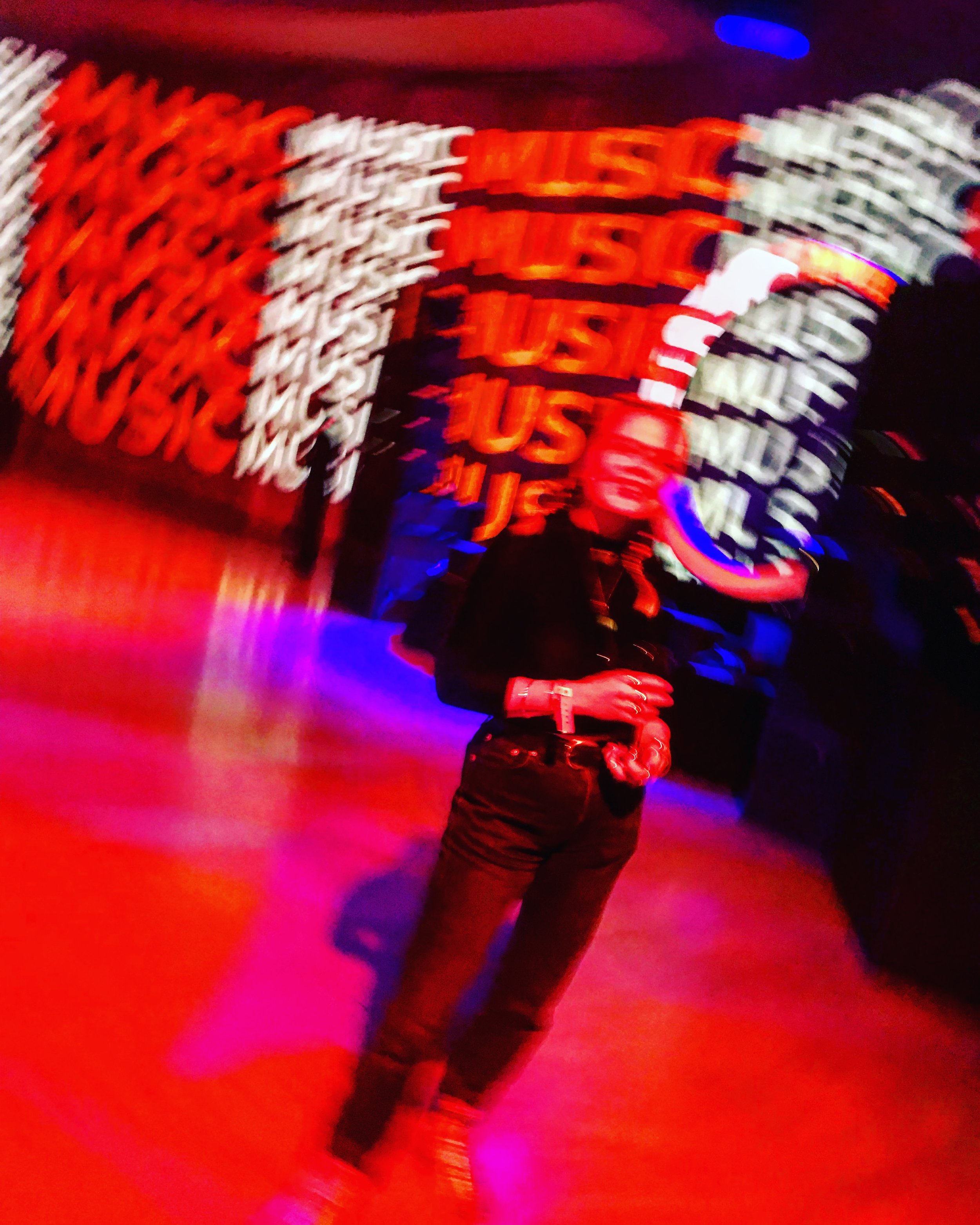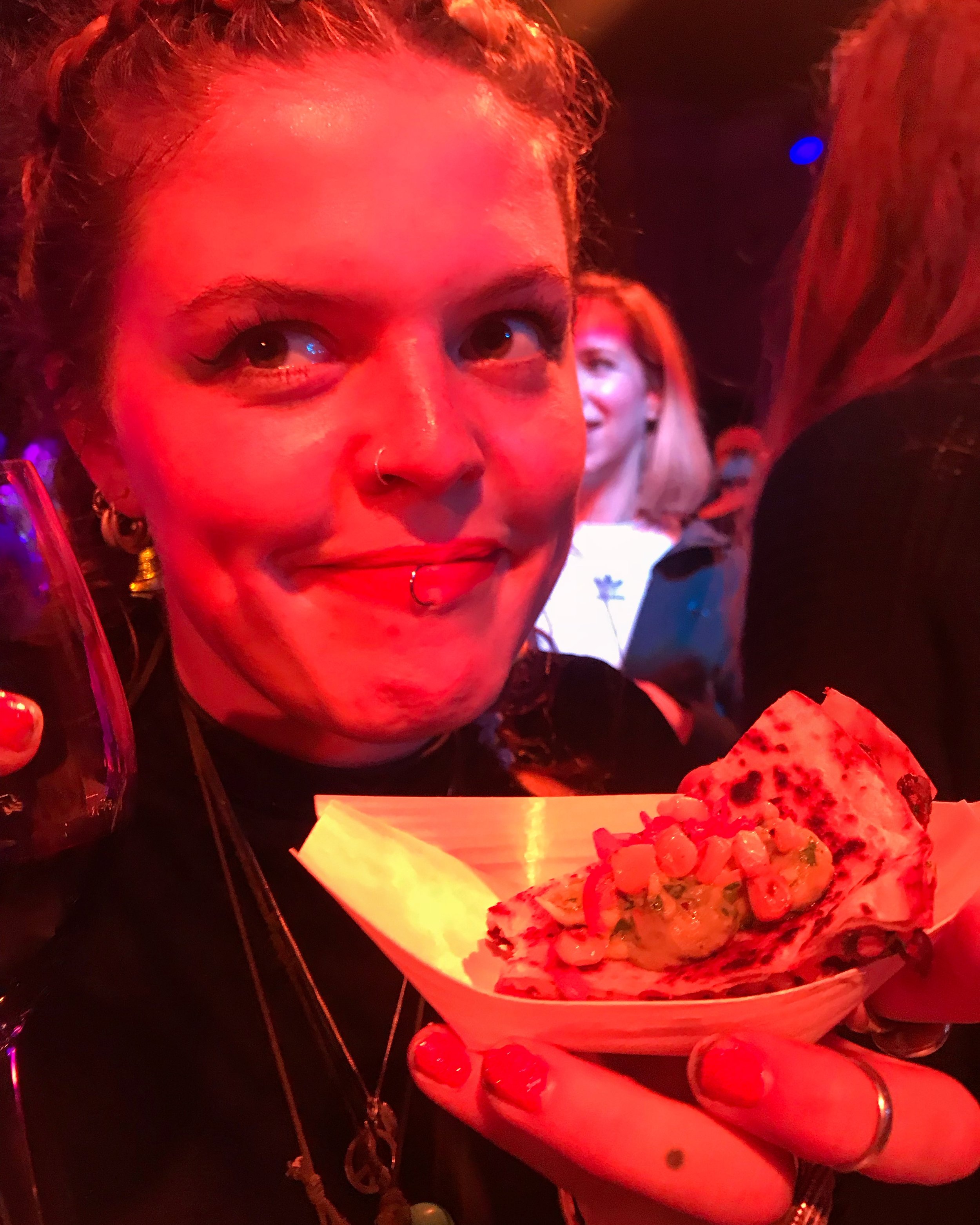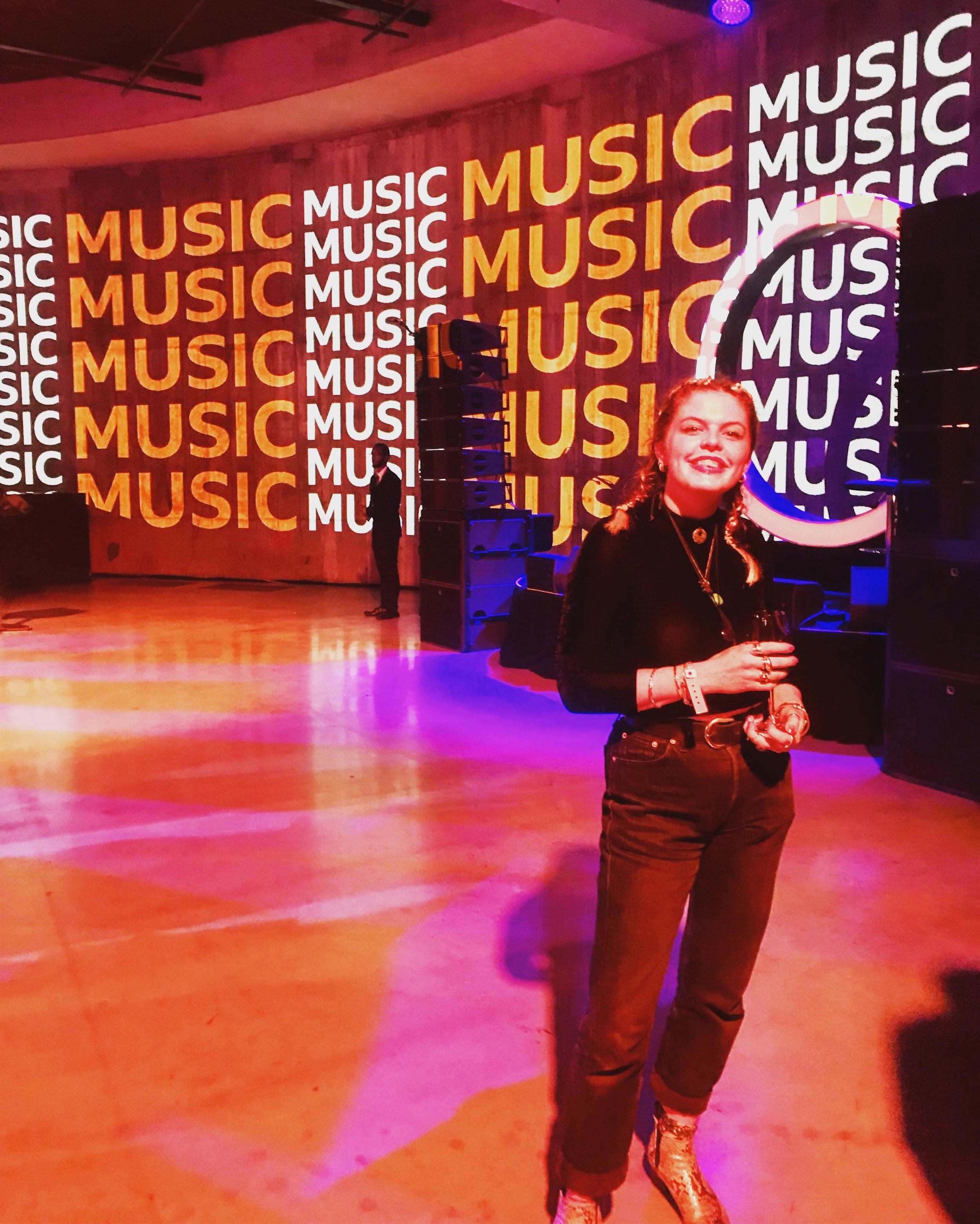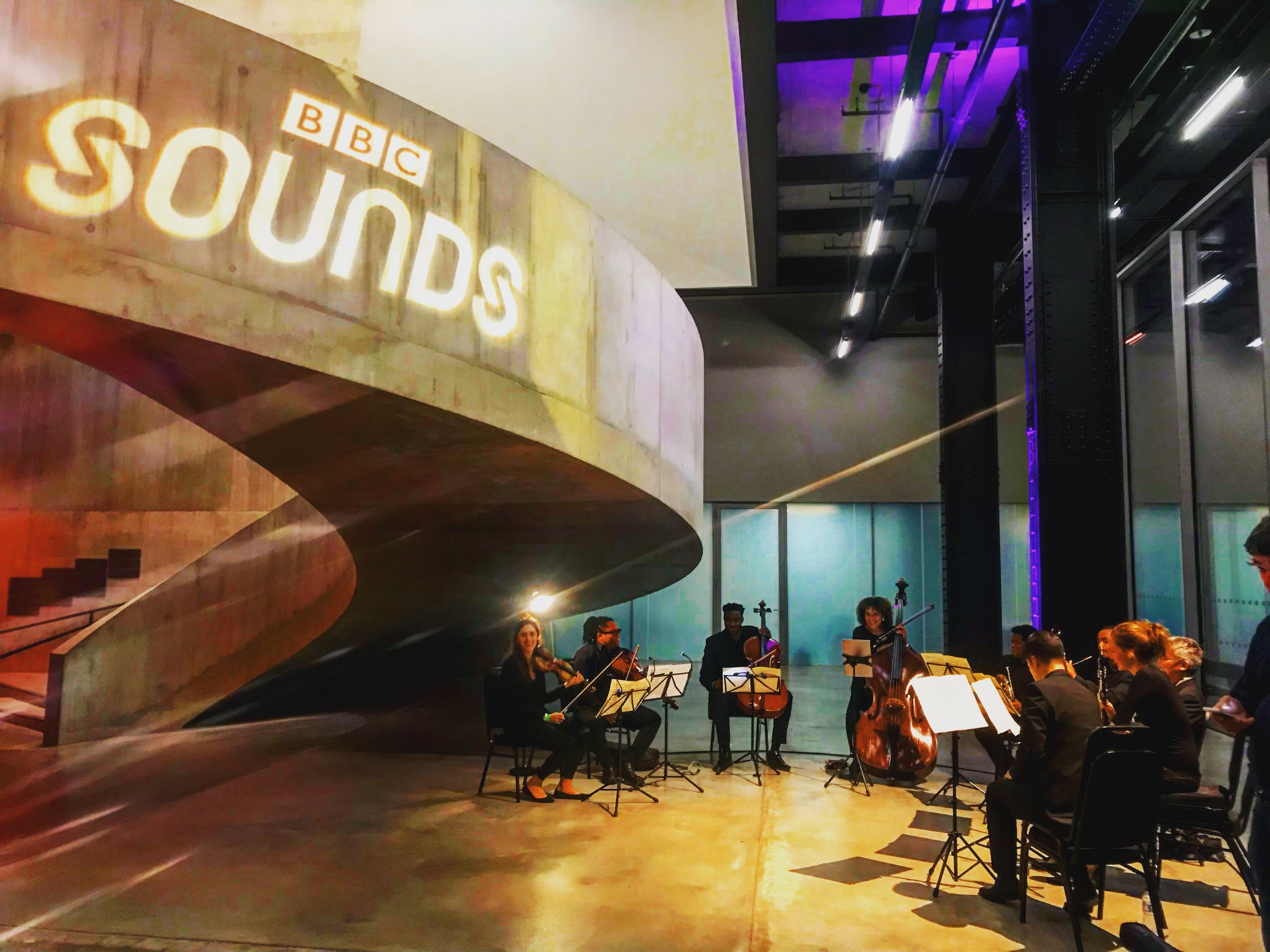In this writing I aim to explore (some of) the ways in which Donald Glover uses his song ‘This Is America’ (TIA) and its video to present a message about identity, race and consumerism in America today. I will do this by explaining the role hip-hop and music videos play in the construction of the African American identity. I will then analyse the song for symbolic and linguistic features that further represent his message.
Brief Overview of the Video
In the opening scenes, we hear harmonic singing and see Glover dancing with both his face and body distorted as he takes a gun and shoots a black musician with a bag over his head. The music then changes to a trap beat and Glover raps.
Glover continues to dance throughout, remaining the central focal point of the, nearly, one-shot film. As we focus on him, at various times, a group of children join his central dancing, and in the background chaos unravels. A dead body is dragged from the scene, there are repeated cyclical fights, kids cycling and dancing on cars, a black choir is shot down in a moment by Glover. There is apparent rioting, a man jumping to his death, teens on their phones, a police car on fire, a white horse gallops behind, and multitudes of stationary cars.
The final scene sees Glover running into the darkness with fear etched across his face.
Music Video
In 1981, MTV (Music Television) first adorned our television sets and levels of performance, dance and their context all entered the realm of the ‘music video’ which was resurrected with the recent digitalisation of the music industry: global media platforms such as YouTube and Vimeo reinstated this form of expression with great success.
Music videos act as an audio-visual (sound and image) medium, and thus a medium defined by an inherent hybridity: neither is it simply imagery, nor music. Therefore it requires a multidisciplinary analysis: a re-mediation across a multitude of disciplines from media studies, to sound and cinematography (Korsgaard, 2017).
In surveys by Statistica: 5 billion people have access to the internet and 10 billion have mobile phones. Thereby making music videos an unstoppable force with the potential to go viral, rendering them as virtually un-deletable information. (Statistica, 2018)
Hip-Hop and It’s Diaspora
Hip-Hop grew as an alternative identity for marginalised and economically oppressed communities, lack of funding led to innovative music making techniques such as DJing. Donald Glover fits the rhetoric of a reinvention of identity and self-definition via the portal of his now famous hip-hop studio name ‘Childish Gambino’.
Hip-Hop is a direct relation to the culture in which it was created ; Glover represents this by styling the musicality of his song to sonically represent the living society and cultures on which he’s commenting. Lyrically and metaphorically he does this, but also in the very musicality: by starting with choral harmonies with wide vocal ranges he represents the long tradition of black music, art and spirituality from gospel choirs, the church, the community and a response to pain. Furthermore, choirs represent the coming together of community into one entity representing black people against their oppressors. Glover moves musically from this imagery, and at the sound of the gun shot, the music drops into ‘trap’ and his delivery moves to a low staccato monophthong clipped triplet flow. A rhythmic flow which in itself is interrupted by the repeat of the chorus’s musical passage. This is a representation of our inability to remain focused on the issue (Rose, 2018).
We know that in order to be successful in hip-hop you must have a level of cultural authenticity - you must serve the needs of your community identity. In his chapter “Jewels Brought from Bondage,” Paul Gilroy asserts that:
“music and musical style were the only forms of language that were transportable for enslaved Africans coming to the new world… (he calls this the)“Topos of Unsayability”….inaccessibility to traditional western forms of literacy gave black music disproportional importance as it replaced written and spoken language” (Gilroy, 2018).
Glover further asserts his authenticity by speaking in the African American Vernacular and following hip-hop syntax. He uses restricted code: short grammatically simple unfinished sentences, few conjunctions, simple and repetitive lyrics, monosyllabic phrases. Perhaps most notably the heavy use of the copula “ This IS America” linking the subject to the predicate, which in this case, is Glover’s presentation of racism, gun violence, and role the African American plays in his own story.
I believe Glover also uses the racial signifier ‘black’ 28 times in the song to signify the lack of equality amongst those that assert that race “isn’t a thing” - all the while, in American, there is a disproportionate access to fundamental human rights (Lyubansky PhD thesis, 2018). Glover adds to his authenticity by including ad-libs by others within the scene such as Young Thug, Slim Jxmmi, Blocboy JB, 21 Savage, and Quavo and Thug.
Furthermore, his assured flow continues smoothly, and directly after every scene in which Glover uses the gun to shoot another black man thus continuing this juxtaposition of inhumanness with humanness, an affirmation of violence, and displacement of the African American in the complicity of gun violence and its willingness to be distracted by media (Rose, 2018). In every shot where Glover instantly kills and ends lives with a gun, he then gently places the gun on a red cloth, perhaps representing the value the red Republicans place on gun laws over human lives.
This Is America Video
The use of the music video as a transmission broadcasting tool cannot be underestimated; it is one that is void of socio-political regimes whilst existing in a paradigm void of spatial-temporal elements (Korsgaard, 2017).
Just as a hip-hop was born out of remix-culture, appropriating and borrowing elements from other fields - such as DJ-ing, sampling, roasting - music videos can now be analysed in the same way. Korsgaard says that we experience audio visuals and music differently from one another. For example, if we took Glover’s TIA music away from the video, our perspective of context would be greatly skewed. Without sonic signifiers we would be unable to determine Glover’s intended message: if the music was minor or major (sad or happy) for example. This is an element that enhances a music video’s power - a combination of forces and disciplines. (Rubin, 2016)
Glover’s TIA amassed ten-million views in the first twenty-four hours. In its first week TIA was the biggest debut of any music video this year with 85.3 million views reaching no.1 in the YouTube Song Charts in 11 countries. Lastly it’s the fifth fastest video ever to reach 100 million views - which it did in only nine days.
Glover uses the spatial-temporal space of music videos to reflect and reference the past experiences of the black American. Examples are his caricature-esc resemblance to the racist character ‘Jim Crow’ offering connotations of repressive racist customs (Andrews, 2018), his re-enactment of the racially led Charleston Shooting (BBC News, 2018) and the use of Gospel-esc vocals. Whilst all the while relentlessly stating that “This ‘IS’ America” - ‘is’ being the verb for present.
Therefore Glover disrupts history, and creates a paradigm that comfortably sits in the past, present and alludes to the future, thus capturing a vivid image of his perceived truth (Korsgaard, 2017).
Urban Space - Appropriation - Remediation
Hip-Hop is about symbolically appropriating urban spaces and this is done through a variety of Hip-Hop characteristics such as sampling. Also in dance, as we see in TIA, Glover uses his body and dance expression as a way of occupying the narrative created around him (Rose, 2018). He appropriates the setting of the video to one which resembles American prison cells. The importance of this appropriation comes from the symbolism of the African American black kid being unjustly incarcerated. A study showed that ‘African Americans are incarcerated at more than 5 times the rate of whites’ (NAACP, 2018).
Furthermore, Botler and Grusin said that: “…all processes of mediation are always also instances of remediation, meaning that any new medium is defined by the way in which it incorporates or reworks the techniques, forms, and aesthetics of existing media” (Botler and Grusin, 1999). Relating that to Glover’s TIA means that we can mediate the existing media he’s highlighting, the elaborating dancing, his clothing’s asethetics, the symbolism of the cars and the biblical running white horse in the background. We can assume that Glover has created himself in the position of exerting influence into the remediation of the black American experience with himself symbolically representing ‘America’ or ‘the black man’.
Position of Self
Glover’s position within the TIA video is contested online. Some say he positions himself as the proverbial black man in America, others say he IS America.
On one hand, Glover conforms to the characteristics of appropriating self through a critique of satirical style: many hip-hop stars in the spot light will brag about their new Versace, and new flashy cars. Gambino points ironically to this by wearing two gold chains depicting an obsession with consumerism and commodities. Also when we first see Glover, he has wild unkempt hair and a ruffled beard. This image provokes as a reminder of how Western slave owners decided to call Africans ‘savages’ in order to dehumanise them.
Glover also chooses to be naked from the waist up to, in turn, humanise himself and as nudity represents vulnerability. This is Glover recycling black American trauma into mainstream art, just as he does with the shootings, the burning of police cars, the riots, the references to police brutality and unlawful deaths of Black kids.
“This a celly (ha), That’s a tool (yeah)” is reference to the 2018 killing of an innocent Black teenager by police (Levin, 2018). In the same way, it can be argued that the African American has compartmentalised its trauma of racism in America
“I can’t stop being black because of trauma and discrimination. I still have to live life and forge on” (Loughrey, 2018). In this way Glover is working towards “normalising blackness”.
So perhaps Glover is playing a caricature of the black experience in America, presented through his juxtaposed imagery. He is a black man, but he is centralising himself in the argument that the black man allows himself to be distracted by consumerism and thus allows his oppressor to stay on top. Glover also wears trousers that resemble oppressive Confederate trousers. In this way, I feel that Glover is stating he IS his own oppressor in allowing this distraction.
Throughout the video, this is played out, in the medium of dance and in which Glover is the centre shot. At times his moves resemble the flamboyance of Fela Kuti who is a famous advocate and activist for black rights and a progressive and unapologetic figure in black history. All the while children join Glover in the latest internet dance craze such as the “Roy Purdy Dance” or the “Gwara Gwara” dance from South Africa (a reference perhaps to racism and apartheid) which all seem pointless in the context of the African American experience of violence and racism Glover is displaying the obscured background.
CONCLUSION
Every second and syllable of TIA can be analysed further, be alas, I’ve no space, however in conclusion I have proved that, through the use of the hybrid medium of audio-visual music videos, Donald Glover has attempted to re-appropriate the America that represents an ideal of equality amongst the races. But that Glover has instead placed it in a position whereby African Americans turn the mirror on themselves to question why the progression has stalled and why they are implicit in the violence, murdering and repetition of racism in America.
In this ‘trap’ song, Glover provokes imagery of the desensitised African American being trapped in black-American existentialism: guns are more important than lives, black innocent lives being taken is seen as being as important as the current entertainment spotlight. Described as the ‘black renaissance’, Glover’s ‘This Is America’ rightly sparked reactions from the black diaspora the world over.
Bibliography
Andrews, E. (2018). Who was Jim Crow?. [online] HISTORY. Available at: https://www.history.com/news/was-jim-crow-a-real-person [Accessed 5 Nov. 2018].
Aniftos, R. (2018). Childish Gambino's 'This is America' is YouTube's Biggest First Week Debut This Year. Billboard. [online] Available at: https://www.billboard.com/articles/news/8456014/childish-gambino-this-is-america-youtube-statistics [Accessed 3 Nov. 2018].
BBC News. (2018). Charleston shooting - as it happened. [online] Available at: https://www.bbc.co.uk/news/live/world-us-canada-33181651 [Accessed 5 Nov. 2018].
Botler, J. and Grusin, R. (1999). Remediation: Understanding New Media. 1st ed. MIT Press.
Coates, T. (2018). I'm not Black, I'm Kanye. The Atlanta. [online] Available at: https://www.theatlantic.com/entertainment/archive/2018/05/im-not-black-im-kanye/559763/ [Accessed 3 Nov. 2018].
Gilroy, P. (1993). Jewels Brought from Bondage. The Black Atlantic: Modernity and Double Consciousness,.
Johnson, T. (2018). Donald Glover’s ‘This Is America’ Is a Nightmare We Can’t Afford to Look Away From. Rolling Stone, [online] p.https://www.rollingstone.com/music/music-news/donald-glovers-this-is-america-is-a-nightmare-we-cant-afford-to-look-away-from-630177/. Available at: https://www.rollingstone.com/music/music-news/donald-glovers-this-is-america-is-a-nightmare-we-cant-afford-to-look-away-from-630177/ [Accessed 3 Nov. 2018].
Korsgaard, M. (2017). Music video after MTV. 1st ed. New York: Routledge, pp.1-16.
Levin, S. (2018). 'They executed him': police killing of Stephon Clark leaves family shattered. [online] the Guardian. Available at: https://www.theguardian.com/us-news/2018/mar/27/stephon-clark-police-shooting-brother-interview-sacramento [Accessed 5 Nov. 2018].
Loughrey, C. (2018). Childish Gambino music video director says 'our goal is to normalise blackness'. Independant. [online] Available at: https://www.independent.co.uk/arts-entertainment/music/news/childish-gambino-this-is-america-music-video-director-ibra-ake-normalise-blackness-a8344606.html [Accessed 3 Nov. 2018].
Lyubansky Ph.D., M. (2018). Psychology Today. [Blog] A Racial Analysis of Childish Gambino's "This is America". Available at: https://www.psychologytoday.com/us/blog/between-the-lines/201805/racial-analysis-childish-gambinos-is-america [Accessed 3 Nov. 2018].
NAACP. (2018). NAACP | Criminal Justice Fact Sheet. [online] Available at: https://www.naacp.org/criminal-justice-fact-sheet/ [Accessed 5 Nov. 2018].
Rose, T. (2018). “All Aboard the Night Train”: Flow, Layering, and Rupture in Postindustrial New York. The Improvisation Studies Reader Spontaneous Acts. [online] Available at: https://www.taylorfrancis.com/books/e/9781136187148/chapters/10.4324%2F9780203083741-37 [Accessed 4 Nov. 2018].
Rubin, J. (2016). Hip Hop Videos and Black Identity in Virtual Space. Journal of Hip Hop Studies, [online] 3(1), pp.74-85. Available at: http://jhhsonline.org/wp-content/uploads/2016/06/Hip-Hop-Videos.pdf [Accessed 3 Nov. 2018].
Statista (2018). Global digital population as of October 2018 (in millions). Global digital population as of October 2018 (in millions). [online] Statista. Available at: https://www.statista.com/statistics/617136/digital-population-worldwide/ [Accessed 3 Nov. 2018].
Statista (2018). Number of mobile phone users worldwide from 2015 to 2020 (in billions). [online] Available at: https://www.statista.com/statistics/274774/forecast-of-mobile-phone-users-worldwide/ [Accessed 3 Nov. 2018].
THOMAS, K., Day, K. and Ward, L. (2018). Multiculturalism and Music Video. In: Multiculturalism and Music Video. [online] Available at: https://us.sagepub.com/sites/default/files/upm-binaries/23145_Chapter_20.pdf [Accessed 3 Nov. 2018].
